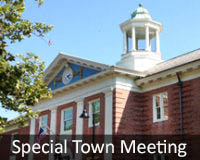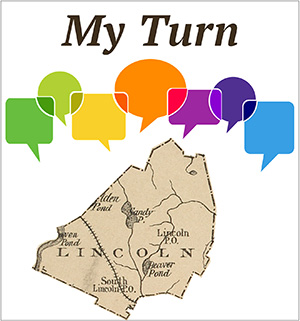 Voters will be asked to approve the transfer of $2.3 million from the town’s debt stabilization fund to make up a budget shortfall after the buds for building the community center came in substantially over budget.
Voters will be asked to approve the transfer of $2.3 million from the town’s debt stabilization fund to make up a budget shortfall after the buds for building the community center came in substantially over budget.
“While this outcome is disappointing, it reflects the broader construction market conditions that are impacting projects across the country,” the Community Center Building Committee said in a town-wide email to LincolnTalk that announced the results. The panel invited residents to a public forum on Wednesday, June 11 at 7:00pm in Town Hall and on Zoom to ask questions, discuss the process, and review possible paths forward (link to come on the Town of Lincoln website).
On the previous night (Tuesday, June 10 at 7:00pm), the Lincoln Planning Board will hold a public hearing on the Panetta/Farrington Nature Link proposal. Both issues will be up for a vote at the Special Town Meeting on Wednesday, June 25 starting at 6:30pm. Town officials penciled in June 26 at the same time for a continuation of the meeting if it runs too late on June 25.
Also on the agenda: a vote to increase the town’s fiscal 2026 reserve fund by about $540,000 to meet some unanticipated expenses this year, and a citizen’s petition to change how FinCom members are appointed (see accompanying article).
The lowest of the seven bids for the community center project that were opened on May 30 was $20,799,135 (the second-lowest bid was exactly $21 million), while the construction budget, including a contingency amount, is $18.5 million.
The bids were a bit unusual in the fairly close range of prices as well as the number of bids. “This is the highest number [for this type of project] that I’ve seen in a long time,” said Kseniya Slavsky of Anser Advisory, the owner’s project manager hired by the town.
The Select Board voted on June 2 to recommend the $2.3 million fund transfer on June 2 after considering with the Finance Committee other possible responses, including cutting the contingency amount, redesigning the project, or asking the town to borrow $2.3 million in a debt exclusion vote, which would require a two-thirds majority at the Special Town Meeting on June 25 as well as a simple majority at a special election. The options were outlined in a May 30 memo from Assistant Town Administrator Dan Pereira to the Community Center Building Committee.
To reduce the project cost, some or all of the “alternate cut” options, which were priced by the low bidder at a total of $386,000, could be removed, at least temporarily. Those options are roller shades, “site amenities” (playground equipment), kitchen equipment, and millwork. (A $38,000 rain garden — an “alternate add” option in the bid packet in case bids came in sufficiently under budget — is off the table.) Following the CCBC’s recommendation, the FinCom and Select Board voted to recommend cutting the first three items but keeping the millwork, since that will be difficult or impossible to add back later if the money becomes available.
Those cuts comprise only 17% of the shortfall, however. Redesigning the project to reduce the overall cost by $2.3 million would mean “going back to the drawing board,” incurring further architectural fees of $1.5 million to $2 million as well as further escalation of 8-10% in construction costs, FinCom Chair Paul Blanchfield said. A debt exclusion to borrow another $2.3 million is the “least appealing” of the possible path forward, he added.
However, “we do have leeway in both free cash and stabilization,” Blanchfield said. The total balance in those two reserve funds is $11.1 million as of July 1, and will rise by about another $2.6 million in the fall with property tax income, he added.
Ratings agencies recommend that towns like Lincoln keep 15% of their annual budget amount in reserve to retain their AAA bond rating. Lincoln’s Finance Committee aims for 20% because “we do have a relatively high debt burden,” Blanchfield noted. The two reserve funds now total 22.5% of the town budget and will rise to about 25% in the fall, he added.
Tapping the debt stabilization fund for the full amount “is most consistent with our approach,” Blanchfield said. That fund was used to close the gap in the school project before it broke ground, while some free cash was used later in the construction process for a few minor items.


